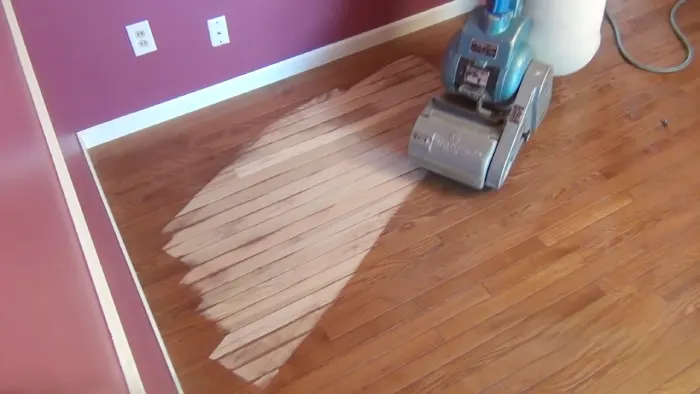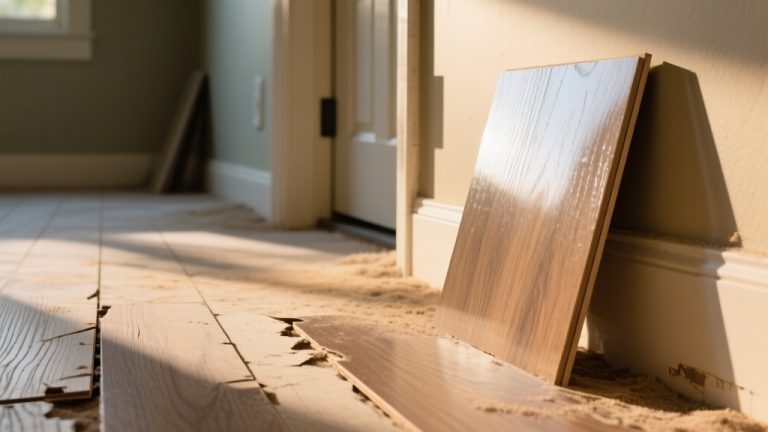Engineered Hardwood Glue vs Nail: 8 Differences
Engineered hardwood flooring installation requires you to decide between glue and nails. Each method has advantages and disadvantages, and knowing the difference is essential to make an informed decision that suits your requirements.
The method of installation is the most significant difference between the two options. Glue-down installation requires a smooth and dry subfloor, while nail-down installation needs a solid wood subfloor. Also, glue-down installation is more stable and less prone to movement than nail-down installation.
Today, we’ll explore the key differences between gluing and nailing engineered hardwood flooring, so you can make an informed decision that meets your needs.
Engineered Hardwood Glue vs Nail: 8 Key Differences
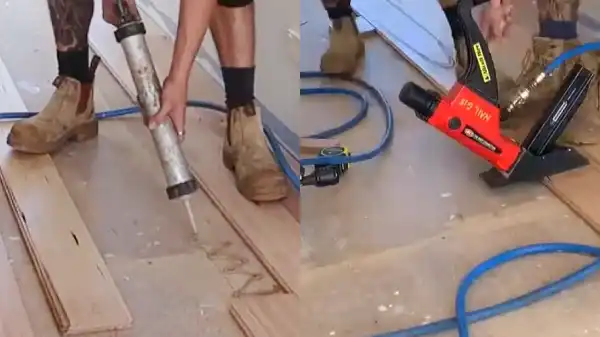
If you’re considering installing engineered hardwood flooring, you may wonder whether to use glue or nails.
- Method of Installation
- Subfloor Compatibility
- Stability and Movement
- Cost Considerations
- Time and Ease of Installation
- Floorboard Replacement
- Environmental Considerations
- Flexibility and Adjustability
1. Method of Installation:
You’ll want to consider the installation method for your engineered hardwood flooring, whether to use glue or nails, as it can affect the durability and look of your floors.
Glue installation involves applying adhesive to the subfloor and placing the planks on top. This method has the advantage of creating a uniform, seamless look with no visible nail holes.
In contrast, nail installation involves using nails or flooring cleats to attach the planks to the subfloor. This method is faster and easier than glue installation and allows for easier removal of individual planks if needed.
2. Subfloor Compatibility:
Glue installation suits concrete, plywood, and OSB subfloors, while nail installation works best on wood subfloors like plywood and OSB.
If you have a concrete subfloor, glue installation is your only option. This method involves applying a special adhesive to the subfloor and laying down the engineered hardwood planks.
Conversely, you can choose between glue or nail installation if you have a wood subfloor. While glue installation provides a more secure bond, nail installation is quicker and easier.
3. Stability and Movement:
For the best stability and minimal movement, consider the type of installation for your subfloor when installing engineered hardwood floors.
Glue installation is preferred because it offers excellent stability, minimal movement, and reduces squeaks. With this method, the glue is applied directly to the subfloor, and the hardwood planks are then pressed onto it, creating a strong bond.
This strong bond helps prevent any movement or shifting of the planks, reducing the likelihood of any squeaks or creaks over time. Also, glue installation is an excellent option for subfloors with slight imperfections or unevenness, as the glue can help fill in any gaps and create a level surface.
On the other hand, nail installation also offers stability, but slight movement and occasional squeaking may occur over time. This method drives nails through the hardwood planks and into the subfloor, securing them in place.
However, while nails provide a stronghold, the movement of the hardwood over time can cause the nails to loosen and create squeaks or creaks. Additionally, nail installation may not be suitable for subfloors with any unevenness or imperfections, as the nails may not secure the planks in place effectively.
4. Cost Considerations:
Considering the installation costs is crucial when deciding which method to use for your subfloor and hardwood planks. Here are some cost considerations to keep in mind when deciding between glue and nail installation for engineered hardwood:
- Glue installation is generally more expensive due to the additional labor involved in spreading the adhesive and applying pressure to the planks to ensure proper adhesion.
- Nail installation is generally more cost-effective, requiring less material and labor costs.
5. Time and Ease of Installation:
Glue installation can be time-consuming due to subfloor preparation and adhesive drying time. This means that you’ll need to spend more time preparing your subfloor before you can even begin installing your engineered hardwood.
Nail installation, however, is faster since it doesn’t require waiting for adhesives to dry. With nail installation, you can install your engineered hardwood and walk on it immediately. This can be a huge advantage for those who want to complete their installation quickly and without downtime.
6. Floorboard Replacement:
Replacing damaged floorboards can be easier and cause less damage to the subfloor with nail installation compared to glue installation.
With glue installation, the adhesive bond between the floorboard and the subfloor is so strong that removing the damaged board without causing significant damage to the subfloor can be challenging.
Repairing the subfloor before installing the replacement board can result in additional time and cost. Furthermore, glue installation typically requires a longer drying, delaying the repair process.
Conversely, nail installation allows for easier replacing damaged floorboards without significant subfloor damage. The nails can be easily removed, and the damaged board can be lifted out without causing much damage to the subfloor. This makes the repair process quicker and less expensive.
Also, nail installation typically has a shorter drying time, allowing quicker use of the repaired area. Overall, nail installation is more practical and cost-effective for repairing damaged floorboards.
7. Environmental Considerations:
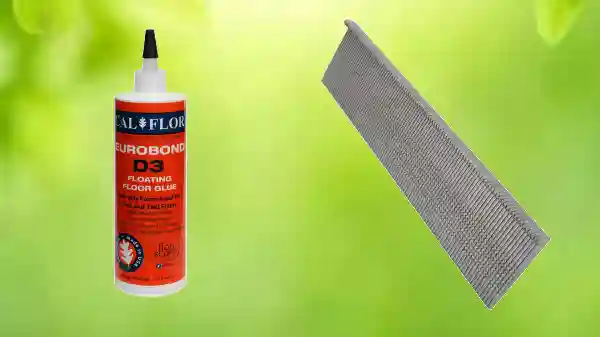
While both methods have their advantages, there are certain environmental considerations to keep in mind. Glue installation may involve using VOCs in some adhesives, which can negatively affect human health and the environment. It’s important to choose low-VOC options to minimize these impacts.
Alternatively, nail installation typically involves fewer environmental concerns as it doesn’t involve the use of adhesives. However, ensure that the nails being used are made from eco-friendly materials and that they are being installed in a way that minimizes waste and energy consumption.
8. Flexibility and Adjustability:
Anticipate needing to change your flooring in the future, such as replacing certain boards or switching to a different type altogether. Nail installation may be the better choice. Nailing provides a slightly flexible installation that allows for easier adjustments.
Conversely, if you don’t anticipate needing to make changes to your flooring and want a more solid and firm feel, glue installation may be the better option. Glue provides a stronger bond between your flooring and subfloor, resulting in a more stable and sturdy installation.
Do you need underlayment for glue-down engineered hardwood?
Remember to install an underlayment before laying down your glue-down engineered hardwood floors to ensure proper moisture control, noise reduction, and subfloor leveling.
While it may seem like an added expense and an extra step in the installation process, the benefits of using an underlayment for glue-down engineered hardwood flooring are well worth it.
Here are some reasons why:
- Moisture control: Moisture can build up under your floors without an underlayment, causing warping and damage over time. A moisture barrier underlayment will prevent this from happening.
- Noise reduction: Hardwood floors can be noisy, especially in high-traffic areas. An underlayment with sound-dampening properties can significantly reduce noise levels and make your home more peaceful.
Is it better to glue or nail-engineered hardwood flooring?
Although nailing may be quicker and cheaper initially, gluing engineered hardwood flooring can provide a more stable and aesthetic finish, as well as avoid the need for noisy and disruptive hammering. It’s like choosing to take the scenic route instead of the highway.
When choosing between the two methods, it’s important to consider your space’s specific needs. Gluing the floor down is best for concrete subfloors and regions with extreme humidity or dryness, as it limits the expansion and contraction of the floor.
In contrast, nailing is a good option for wooden subfloors and spaces where the floor may need to be removed or replaced frequently. It also provides flexibility and adjustability, as the nails can be easily removed or adjusted.
When should engineered hardwood be nailed?
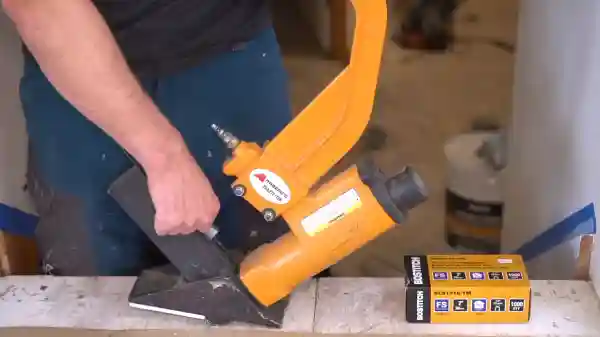
You’ll feel confident and secure using the recommended size staple or cleat when installing 3/4′ thick engineered planks. This type of flooring should be nailed or stapled using a 3/4′ solid wood flooring nailer or stapler of any brand.
In addition to using the recommended size staple or cleat, you must follow the recommended nailing schedule. This includes nailing 1′ to 3′ from the ends of each plank and 8′ to 10′ in the field.
What is the best adhesive for engineered hardwood flooring?
Using urethane adhesive is a reliable and effective way to ensure your beautiful new engineered hardwood flooring stays securely in place. This adhesive can be used to adhere to all types of engineered hardwood flooring, creating a strong bond that can withstand the test of time.
The adhesive is applied directly to the subfloor, then the flooring is placed on top, allowing the adhesive to dry and create a permanent bond. When choosing an adhesive for your engineered hardwood flooring, it’s important to select a product that’s specifically designed for this type of flooring.
Glue vs. Nail Installation for Engineered Hardwood- Choose Wisely for Better Support
Now you know the key differences between engineered hardwood glue and nail installation. As a homeowner, consider each method’s benefits and drawbacks before deciding.
While nailing may be a faster installation process, glue is often preferred for its superior durability and sound reduction qualities. Determine when nailing is appropriate, such as in high-traffic areas or subfloor inconsistencies.Also, be sure to select the best adhesive for your specific engineered hardwood flooring, as this can greatly impact the overall success of your installation. And while underlayment isn’t always necessary for glue-down installations, it can provide added benefits such as soundproofing or moisture protection.


